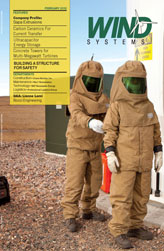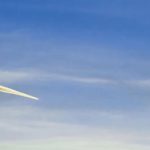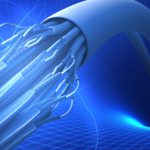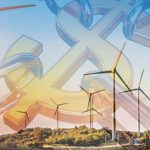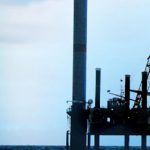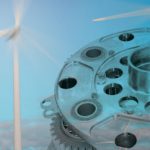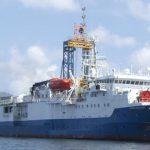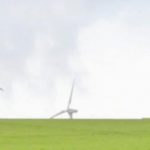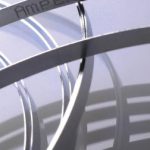There has been significant growth over the past few years in the size of wind turbines, which went from hundreds of kilowatts to several megawatts. This change in size has also imposed very strict conditions for wind turbine components, including steel towers. The demand generated by the limitations of the current technologies of the steel towers has led to the development of technologies for precast concrete wind towers of high-energy performance that can overcome heights and weights not achievable by steel towers. In this field, the Spanish company Inneo Torres has positioned itself as one of the leading international manufacturers of precast structural concrete towers.
Tower Characteristics
The exceptional experience acquired by the construction of numerous vertical concrete structures is not directly applicable to the design and construction of concrete towers for wind turbines, which have very specific requirements including: speed on construction rates; demanding fatigue loading; specific requirements concerning dynamic behavior and vibration; visual quality and finishing; visual integration requirements in the landscape, and more. Figure 1
Usually the “in situ” construction techniques for vertical concrete structures—by means of climbing or sliding formwork—have essential limitations: its geometry is strongly influenced by technology and cost of the formwork, and the time required for its implementation is quite extensive and dependent on the weather conditions. It is logical, therefore, that this technique has been used only with specific wind towers or on an experimental basis in towers where the costs or lead times have been far-reaching. Figure 2
On the other side, the precast concrete structural wind towers have all the conditions that may be required, and a single constraint that limits its scope: the amortization of the initial investment in technology and equipment, which requires a sufficient number of identical towers. Figure 3
Tower Technology
Inneo’s product range is composed of three models of towers for heights of 80 m, 100 m, and 120 m that are suitable for onshore and offshore wind farms and turbines from 1.5 to 4.5MW. Thanks to its versatility the precast tower solution developed by Inneo Torres is suitable for all types of wind turbine hub heights and under any wind conditions, and it can be tailored to meet the specifics requirements of any wind turbine (geometry, dynamic behavior, special loads, etc.). Inneo can also adapt the towers, which have a high ductility, to seismic risk areas. Figure 4
Main Features
We will outline some of the primary tower attributes here, including: behavior and structural capacity; transport logistics and assembly; durability; foundations; environmental constraints; and functionality:
Behavior and Structural Capacity
• Adoption of a system that is not conditioned by transport limitations and therefore provides freedom in the choice of the geometry of the tower, allowing the structural optimization both in its resistant capacity and on the control of its natural frequency and dynamic response.
• The ability to achieve great heights and support large-scale wind turbines both on land and at sea.
• Significant improvement of structural damping, and therefore of the dynamic behavior, reducing fatigue loading and thus contributing to an increase of the equipment life and the reduction of maintenance requirements.
• Joints between ductile parts are reliable, maintenance-free, tested and certified. Simple and quick implementation in the field.
• Optimal response to seismic actions thanks to the high ductility of all sections of the tower, including the unions and the high structural damping that increases in extreme load situations. This enables the structure to absorb and dissipate high amounts of energy in the event of an earthquake, in clear contrast with the behavior of existing steel towers.
Transport Logistics and Assembly
• Sensitivity to stimuli that can produce aeroelastic phenomenon of vortex shedding on the isolated tower. This makes it possible to finish the assembly of the tower and to install the nacelle at any time, unlike metal towers that have to assemble the gondola immediately after placing the last section of the tower.
• High rate of assembly through the use of a few pieces of great length and simple and rapid systems for the use of the joints. Onshore construction rates of 2.5 towers per week, equivalent to the existing steel towers and unreachable for in-situ building systems of concrete towers or hybrid ones.
• Easy and reliable transportation of large pieces of reduced height.
Durability
• There is practically no need of maintenance for the tower or the unions.
• Greater durability of concrete structures, particularly in marine environments, thanks to the adequate protection of the concrete lining in the inner reinforcement corrosion. This increased durability is enhanced by the high-performance of the concrete used in the wind towers.
• Increased tolerance to damage from impact or accidental actions, simpler and cheaper in case of future repairs.
Foundations
• The increased stiffness and frequency of vibration of the towers greatly reduces stiffness requirements of the foundation. This helps to reduce uncertainties associated with the deformation of the ground and allows significant savings in the foundation, particularly in places with soft ground.
• The connection with the foundation is made without interfaces; it’s simpler, cheaper, and more reliable.
• The great weight of the tower makes it more stable and allows for a significant reduction of the foundation, making it more economical.
• The larger diameter at the base of the tower reduces flights of the shoe, as well as the effort applied, and allows less amount of armor.
• The foundation is 25-35 percent cheaper than equivalent metal towers, and it is faster to execute.
Environmental Constraints
• Generation of less noise due to the concrete damping effect.
• Lower CO2 emissions to manufacture the tower, between 55 and 65 percent less than the emissions spent in a metal tower.
• Recyclable materials. Once completed the useful life of the structure, the concrete can be used as recycled aggregate for new concrete preparations.
Functionality
• Large interior space at the base of the tower, thanks to its larger diameter (maximum diameter for steel towers 4.3 m, for concrete towers the diameter can be equal or superior to 6.8 m), which favors the assembly of equipment inside the tower at one level and without constraints of space.
• Increased size of the door, which allows for the passage of the equipment easily and facilitates its installation or eventual repair.
• Facility to anchor the elements and interior equipment necessary in the walls of the tower.
• Improved safety facilities in case of lightning strikes.
Summary
Inneo Torres was founded in 2004 and has installed more than 150 towers of 80 and 100 m in Spain and recently in Brazil. In fact, the company recently signed several contracts with some of the main wind turbines manufactures of the market and in 2012 will start serial production of its120-meter model. Also, Inneo will launch new installations of its patented mobile factory, already used in Brazil last year, in other Brazilians states in the course of this year.



















